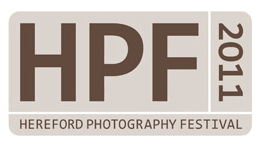The Common Land Program
Friday 28th October – Saturday 26th November. Monday to Saturday 9.30am-5pm.
Discover Herefordshire Centre, 1 King Street, Hereford HR4 9BW
Alfred Watkins, 1855 - 1935 lived and worked in Herefordshire. He was a self taught archaeologist originating the idea of ley-lines and was also well known as a pioneering photographer inventing the exposure meter called the Watkins Bee Meter.
Watkins took up photography in 1875, aged twenty. He developed his photographic practice alongside a career running the family’s brewery and flour-milling business in Hereford. Watkins argued that in principle and practice all photography, of whatever kind, was, as the word meant, ‘drawing with light. Watkins originated the term ley line - the idea came to Watkins, he tells his readers, as a ‘rush of revelations’ on 30 June 1921, when on a visit to Blackwardine, a sighting from a hill-top led him to see on a map, before he saw it on the ground, a straight line linking various ancient sites.
“Presume,” he says, “a primitive people, with few or no enclosures, wanting a few necessities (as salt, flint flakes, and, later on, metals) only to be had from a distance. The shortest way to such a distant point was a straight line, the human way of attaining a straight line is by sighting, and accordingly all these early trackways were straight, and laid out in much the same way that a marksman gets the back and fore sights of his rifle in line with the target.” Watkins spent many years studying such alignments on the ground and on maps. He took photographs of his alignments, wrote books and gave lectures.
He wrote 'The Old Straight Track' in 1925, the most well known of his publications and still in print today. Essentially the ley-line idea is shaped by Watkins’s photographic theory, practice and documentation; the two practices developing concurrently with purpose and in-twinned.
The artists Simon Roberts and Sally Payen have selected glass plates negatives out of the archive of work by Alfred Watkins now held in the Hereford Museum Resource and Learning Centre. The Alfred Watkins collection is both a rich catalogue of Herefordshire past and important piece of geographic research.The works selected 'all of which contain a strong sense of geography and in most cases have pathways of some form or another leading through the landscape or suggest a sense of movement'. This marks the beginning of a longer term artist-led, action research project which aims to investigate the links between innovation and photography - placing Alfred Watkins work alongside contemporary artists.
The project seeks to investigate and re-place some of Watkins ideas back into the outside environment by means of public engagement, digital technologies and in the spirit of pioneering Watkins by utilizing and developing new ideas about public realm and current art practice. ’
